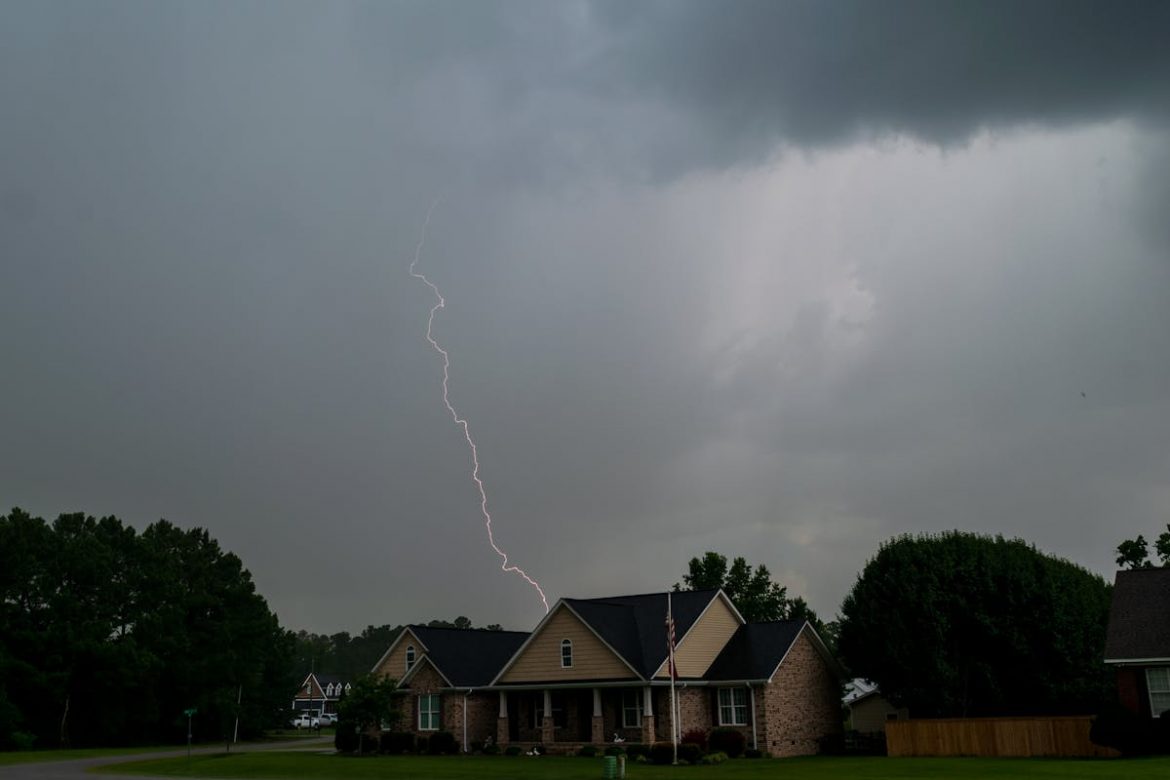
- Implement proper drainage to prevent flooding, ensuring gutters and downspouts direct water away from the home.
- Opt for fire-resistant plants like succulents and deciduous trees to create barriers against wildfires.
- Secure outdoor furniture and decor to prevent damage from high winds, and plant windbreaks to reduce wind impact.
- Create defensible spaces around the home to protect against wildfires and install retaining walls on slopes to prevent erosion.
Your yard is a place of beauty and relaxation, but it can also be vulnerable to natural disasters such as floods, hurricanes, wildfires, and more. Taking steps to protect your yard can not only save you time and money in the long run, but it can also help keep you and your family safe. This blog will discuss essential tips for protecting your yard from natural disasters.
Maintain Proper Drainage
One of the most important steps you can take to protect your yard from natural disasters is to ensure that you have proper drainage in place. This means making sure that your gutters are clean and free of debris, that your downspouts are directing water away from your home, and that any low-lying areas in your yard are properly graded to prevent flooding.
Choose Fire-Resistant Plants
If you live in an area prone to wildfires, choosing fire-resistant plants for your yard can help protect your home and property. Look for plants that have high moisture content or low oil content. Avoid planting highly flammable plants such as pine trees or junipers close to your home. Here are four types of plants that are considered fire-resistant:
Succulents
Succulents, such as cacti and aloe vera, are known for their ability to retain water, making them less likely to catch fire. They also have thick, waxy leaves that act as a barrier against flames.
Ground Covers
Ground covers like ice plants or creeping thyme can serve as natural firebreaks in your yard. These plants grow low to the ground and are great for covering large areas, making them ideal for preventing the spread of fires.
Shrubs
Shrubs with dense foliage, such as boxwood or holly, can help protect your yard from wildfires. These plants have a high moisture content and are less likely to catch fire than other types of shrubs.
Deciduous Trees
Deciduous trees, like maple or oak, lose their leaves in the fall, which can help prevent fires from spreading. These trees also have a thick layer of bark that acts as a natural fire barrier.
These are just a few examples of fire-resistant plants, but there are many more to choose from. Be sure to do your research and consult with a local expert to find the best plants for your specific region. Planting these types of plants in strategic locations around your yard can help create a barrier against wildfires and protect your home.
Secure Outdoor Furniture and Decor
High winds from hurricanes or severe storms can turn outdoor furniture and decor into dangerous projectiles that can cause damage to your home or injure someone. Make sure that all outdoor furniture is secured or brought inside when not in use, and consider using anchors or stakes to secure items such as umbrellas or lawn ornaments.

Plant Windbreaks
If you live in an area prone to high winds, planting windbreaks such as hedges or trees can help protect your yard from damage. Windbreaks can help reduce wind speed and turbulence, which can prevent trees from being uprooted or branches from breaking off during a storm.
Create Defensible Space
If you live in a wildfire-prone area, creating defensible space around your home can help protect it from flames. This means clearing away dead vegetation, keeping grass mowed short, and creating a buffer zone between flammable materials (such as woodpiles) and your home. Additionally, keep gutters and roofs clear of debris to prevent embers from igniting. This space acts as a barrier, giving firefighters a better chance to defend your home in case of a wildfire.
Install a Retaining Wall
If you live on a slope or hillside, installing a retaining wall can help prevent erosion and protect your home from potential landslides. Retaining walls can be made from various materials. However, a durable boulder retaining wall can provide the most protection against possible debris flows. Just make sure you employ the service of professionals for safety and effectiveness.
Protecting your yard from natural disasters is crucial for both safety and preservation. You can safeguard your property and loved ones by implementing proper drainage, choosing fire-resistant plants, securing outdoor items, planting windbreaks, creating defensible space, and installing retaining walls where necessary. These measures enhance your yard’s resilience against the forces of nature and contribute to a safer, more beautiful space for relaxation and enjoyment.